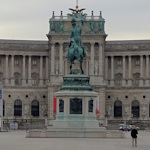
It’s 1867 and time for another formal name change for the Habsburg realms. Say goodbye (sort of) to the Austrian Empire and say hello to Austria-Hungary.
But how did this happen? And why?
- Reboot gave Hungary more autonomy
- But Austria retained control over defence, foreign policy and similar
- Book a tour* of the Habsburg capital
- See also:
- Previous: The Austrian Empire
- Next: What is Austria?
Revolution and change
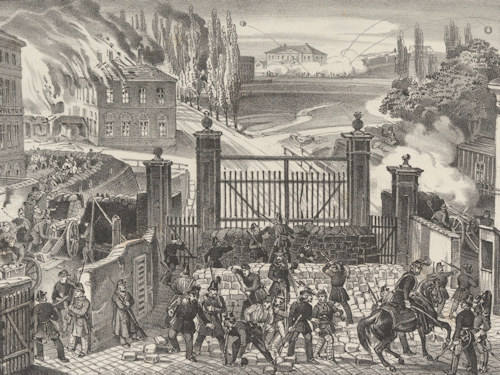
(A battle scene from the 1848 revolution in Vienna, published that year by Franz Werner; Wien Museum Inv.-Nr. 87978; excerpt reproduced with permission under the terms of the CC0 licence)
Censorship and strict control on political freedoms characterised the early 19th century in Vienna, indirectly ushering in the homely Biedermeier era of art, lifestyle, and design.
The human spirit being what it is, though, a backlash was inevitable. So, when a slew of revolutions struck Europe in 1848, the Viennese joined in.
Vienna never rebelled in the same way that, for example, France did. Nevertheless, the disturbances provoked some political change and local liberalisation. For example, Emperor Ferdinand I (son of Franz II/I) abdicated in favour of his young nephew, Franz Joseph.
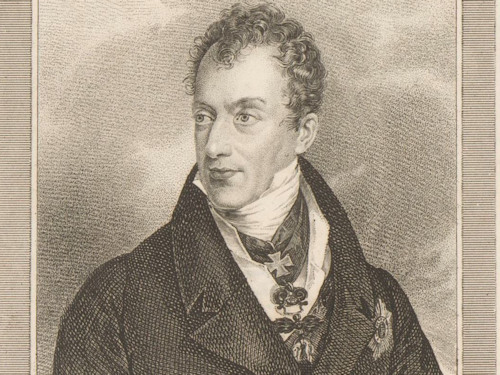
(Prince Metternich, Austrian chancellor in the early 19th century, spymaster and guardian of the Austrian Empire’s conservative values. He resigned during the 1848 revolution. He’s also why we have Sachertorte. Image courtesy of the Rijksmuseum)
Other Habsburg lands also shared some of that revolutionary spirit. Hungary, in particular, regularly got a bit frisky, even resulting in a brief war of independence in (no surprise) 1848.
The Hungarian “rebels” lost, however, and the Austrian Empire cracked down hard. The emperor dissolved the local Hungarian parliament and effectively introduced totalitarian rule from Vienna.
All these counter-revolutionary efforts by the Habsburg authorities did not, however, put an end to nationalist and liberal sentiments across their territories.
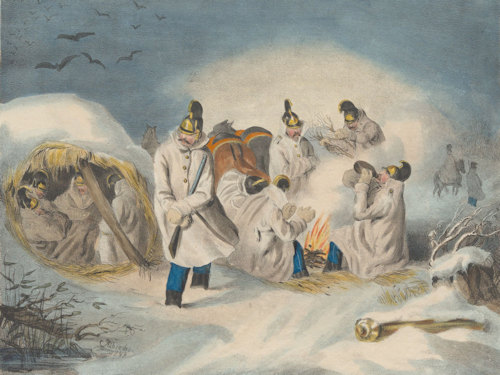
(Hungary / The trials of the soldier in winter; scenes from the 1848/1849 Hungarian campaign; lithograph by Joseph Albrecht, published by L. Mossbeck, 1849; Wien Museum Inv.-Nr. 88638, excerpt reproduced with permission under the terms of the CC0 licence)
Internal and external events continued to chip away at the Habsburg map in the years after 1848.
For example, the Austro-Prussian war of 1866 led to the Venetian lands switching to Italian rule. And the Hungarians were never truly happy with the state of their relationship with their rulers in Vienna.
Franz Joseph eventually decided to redefine the imperial power lines to take the wind out of the sails of Hungarian independence efforts and free up military and other resources tied down keeping Hungary quiet.
Franz Joseph’s wife (Empress Elisabeth) was actually a noted supporter of Hungarian causes, which might also have helped influence the emperor’s thought processes.
The result was the 1867 Austro-Hungarian Compromise, which saw our informal Habsburg Empire (now the formal Austrian Empire) officially morph into Austria-Hungary, also known as the Austro-Hungarian Empire.
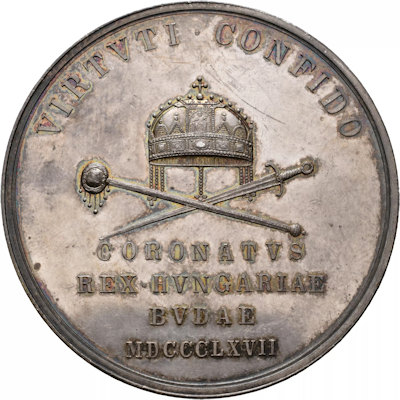
(Coin commemorating Franz Joseph’s coronation as King of Hungary in 1867; Josef Tautenhayn d. Ä. (medalist); 1867 (Production), Wien Museum Inv.-Nr. 6991, reproduced under the terms of the CC BY 4.0 license; photo: Wien Museum)
This change effectively split the empire into two semi-independent halves: the Kingdom of Hungary and the Austrian Empire. Hungary got back its parliament and authority over most internal affairs, but Franz Joseph remained head of state. So he was both Emperor of Austria and King of Hungary.
On top of all that, certain aspects of political power remained centralised: the monarchy retained authority, for example, over foreign affairs and the military.
So it was Austria-Hungary as a whole and not just the Austrian Empire part that went to war in 1914 under Franz Joseph. Unfortunately for the Habsburgs, World War I would bring about the end of their rule and the birth of modern Austria.
Tip: You can learn a lot about the life and times of Franz Joseph at the Hofburg.